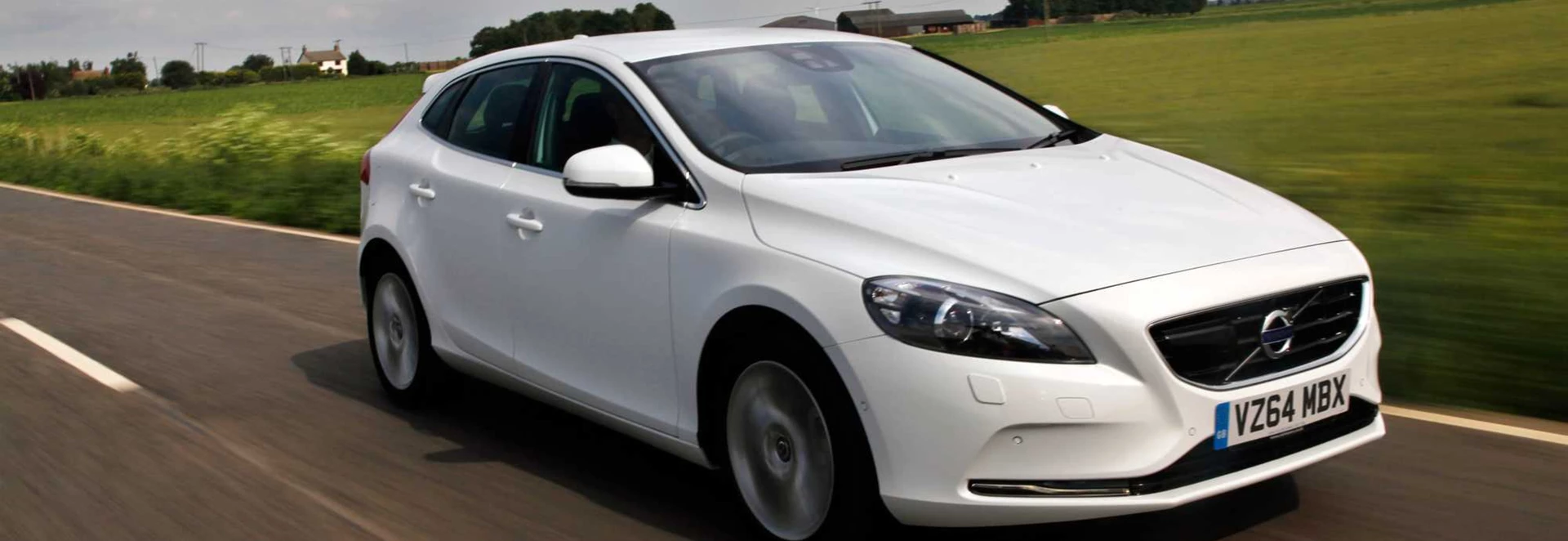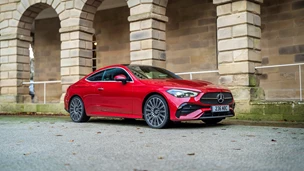Volvo has been well-known for its sturdy estates and safety innovations, but, it wasn’t until the five-door V40 hatchback launched in 2012 that it became a player in one of the most important sectors in the UK.
The Volvo V40 challenges other premium and practical hatchbacks, which include the Volkswagen Golf, BMW 1 Series and Audi A3.
Considering the quality of the opposition, it appears the V40 faces a tall order to bring in the sales. However, this Volvo will instantly appeal to some thanks to its striking looks and lack of ubiquity versus its main rivals.
Performance
The Volvo V40 is offered with two diesel engines and two petrol engines, both comprising of 1.6-litre and 2.0-litre units.
We tested the 1.6-litre D2 engine, which is the lowest powered diesel in the V40’s line-up, and it shows. The pace of this 113bhp engine with a six-speed Powershift automatic gearbox is middling, achieving 0-62mph in 12.1 seconds (11.5 seconds with the manual ‘box), with a top speed of 118mph.
The equivalent Golf, the 1.6-litre TDI DSG, is notably faster, hitting 62mph in 10.7 seconds with a top speed of 119mph.
Still, the D2 engine is not bad at all, but we recommend linking it to the manual ‘box rather than the automatic transmission. The former is a smooth and easy ride but the Powershift seems poorly mated to the engine, with slow response times when changing gear.
The result is a few seconds delay from putting your foot on the throttle to the car actually moving, which caused one-too-many tricky moments when trying to pull out of a traffic-laden junction.
If you’re looking for more clout, the other diesel engines in the V40 range are the much more potent 2.0-litre D3 and D4 which deliver 148bhp and 187bhp respectively.
The petrol units meanwhile include a 1.6-litre T2 with 118bhp and the 1.6-litre T3 with 148bhp.
The range-topping V40 uses a 242bhp T5 2.0-litre petrol, which is blisteringly fast. If speed is not of the essence, however, than the much more efficient D2 with a manual ‘box can do the job just fine.
Ride and Handling
Steering is well-weighted and accurate while there’s plenty of grip on the roads, with little body roll around tight bends.
Volvo is never far off with its driving dynamics, and the V40 doesn’t disappoint. Steering is well-weighted and accurate while there’s plenty of grip on the roads, with little body roll around tight bends. However, there’s not as much feel through the steering as you get in other similar-sized hatchbacks. Therefore it’s not quite as dynamic as, for example, a BMW 1 Series or VW Golf, but this won’t be a concern to most. It’s a comfortable ride too – well-engineered for a mixture of bumpy B-roads and long motorway stints. Still, it’s veering on the stiff side, which means you probably wouldn’t want to go for a larger wheel size than 17-inches or ride comfort might start to be affected.
Interior and Equipment
The Volvo V40 is the first ever production car launched that features a U-shaped pedestrian airbag, which is released from under the bonnet to soften impact on detection.
Standard spec on all V40s includes Bluetooth, a five-inch colour display screen, DAB radio, steering wheel remote controls and a leather steering wheel. There’s plenty of safety features too, including Volvo’s low-speed collision avoidance system called City Safety, as well as a pedestrian airbag. Volvo has a good record with designing pleasant interiors, and the quality and class of the materials and design inside the V40 are outstanding. The trim plastics are top-notch and the central console is intuitive and neatly designed. However, the V40 isn’t the most practical in its segment though. It offers 335 litres of boot space, okay for a shopping trip but lagging compared to 380 litres found in a VW Golf and Audi A3.
Cost
The D2 automatic model we drove is one of the most efficient in the V40 range, offering official combined figures of 72.4mpg and CO2 emissions of 102g/km.
The D2 automatic model we drove is one of the most efficient in the V40 range, offering official combined figures of 72.4mpg and CO2 emissions of 102g/km. Still, it’s not under the tax-free 100g/km mark which is yet another reason to choose the manual ‘box with this engine, which offers 83.1mpg and an impressive 88g/km. Also impressing is the 2.0-litre D4 diesel which with the manual gearbox emits just 99g/km. The most efficient petrol unit, the 1.6-litre T2 emits 124g/km and averages 53.3mpg. Next to its German rivals, the efficiency of the V40 compares very well – especially the most efficient diesel engines. Pricing for the Volvo also undercuts the BMW 1 Series and Audi A3, but some VW Golf models are cheaper than the closest equivalents in the V40 line-up. However, those same Golf models don’t offer as much kit as the Volvo.
Our Verdict
The V40 is a great addition to the Volvo line-up, demonstrating the carmaker’s ability to be a viable competitor to high-volume players. In some areas it performs very strongly, particularly in terms of efficiency, running costs, equipment and cabin quality. In other aspects, however, the V40 lags behind rivals from German premium brands. The Volvo’s drive is composed but less interesting than rivals and it’s certainly not the quickest or most practical in its class. Overall though, if you’re looking to buy a new premium hatchback and prefer a more original choice, then the V40 is definitely worth considering.




